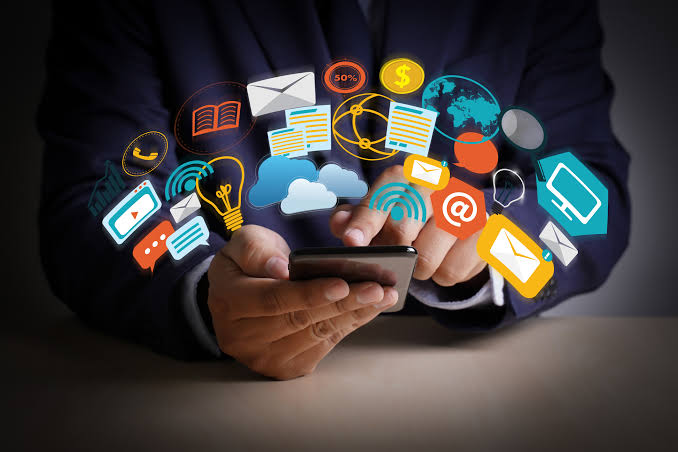Email marketing is one of the most effective ways to reach your audience and convert leads into customers.
But managing an email marketing campaign can be time-consuming and complex. That’s where email automation comes in.
By using automation, you can save time, increase engagement, and improve your marketing results.
This blog will guide you through the steps to effectively use automation in your email marketing efforts.
Understanding Email Marketing Automation
Email marketing automation is the process of using software to send emails automatically based on predefined triggers and actions.
The main components of email marketing automation include:
Automated email sequences: A series of emails sent over time.
Triggers and actions: Specific events that initiate an email (like signing up for a newsletter).
Segmentation: Dividing your email list into groups based on certain criteria.
Personalization: Customizing emails to make them relevant to individual recipients.
Benefits of email marketing automation:
Saves time and resources: Automates repetitive tasks.
Increases engagement and conversion rates: Sends timely and relevant emails.
Provides valuable insights and analytics: Tracks performance and optimizes strategies.
Setting Up Your Email Marketing Automation
Choosing the right email marketing automation platform is crucial. Popular platforms include Mailchimp, HubSpot, and ActiveCampaign. When selecting a platform, consider factors like ease of use, features, integrations, and cost.
Defining your goals and objectives is the next step. Determine what you want to achieve with automation. Common goals include increasing sales, nurturing leads, and boosting engagement. Align these goals with your overall marketing strategy to ensure consistency and effectiveness.
Building Your Automated Email Sequences
Identifying key touchpoints in the customer journey helps in creating relevant email sequences. Common touchpoints include:
Welcome series: Introduce new subscribers to your brand.
Onboarding sequences: Guide new customers on how to use your product or service.
Abandoned cart reminders: Encourage shoppers to complete their purchase.
Post-purchase follow-ups: Thank customers and suggest related products.
Creating effective email content is essential for engaging your audience. Focus on the following:
Crafting compelling subject lines: Capture attention and entice recipients to open the email.
Writing personalized and engaging email copy: Use the recipient’s name and relevant information.
Incorporating strong calls to action (CTAs): Direct recipients on what to do next.
Designing visually appealing emails enhances the reader’s experience. Use templates to ensure consistency and follow best practices for email design, such as using images sparingly and keeping the layout clean.
Segmenting Your Audience
Segmentation involves dividing your email list into smaller groups based on specific criteria. This makes your emails more relevant and effective. Common segmentation criteria include:
Demographics: Age, gender, location.
Behavior and engagement: Past interactions with your emails or website.
Purchase history: Products bought or amount spent.
Email interactions: Opens, clicks, and responses.
Tools and techniques for effective segmentation include using data and analytics to identify patterns and trends. Dynamic segmentation, where subscribers are automatically moved between segments based on their actions, is particularly powerful.
Personalizing Your Emails
Personalization increases engagement by making emails relevant to individual recipients. Techniques for personalizing automated emails include:
Using recipient names and details: Address recipients by their first name.
Dynamic content based on user behavior: Show different content to different segments.
Personalized product recommendations: Suggest products based on past purchases.
Examples of successful personalized email campaigns include:
Netflix: Recommends shows based on viewing history.
Amazon: Suggests products similar to previous purchases.
Implementing Triggers and Actions
Understanding triggers and actions is key to setting up automation. Triggers are events that initiate an email, such as a website visit or a purchase. Actions are what happens as a result, like sending an email or moving a subscriber to a different list.
Setting up automated workflows involves creating if/then scenarios. For example, if a customer abandons their cart, then send a reminder email. Mapping out customer journeys helps visualize and plan these workflows.
Testing and optimizing workflows ensures they are effective. A/B testing allows you to compare different versions of emails and see which performs better. Analyzing results helps you make data-driven adjustments.
Monitoring and Analyzing Performance
Key metrics to track in email marketing automation include:
Open rates: Percentage of recipients who open the email.
Click-through rates (CTR): Percentage of recipients who click on links.
Conversion rates: Percentage of recipients who complete the desired action.
Bounce rates and unsubscribes: Percentage of emails not delivered and recipients opting out.
Tools for tracking and analyzing performance include built-in analytics from email platforms and integrating with other tools like Google Analytics.
Using data to improve and refine your strategy involves identifying patterns and trends. This helps you make informed decisions and continuously improve your email marketing efforts.
Best Practices and Tips for Effective Email Automation
Maintaining a clean email list is crucial for deliverability and engagement. Regularly update and clean your list to remove inactive subscribers. Follow best practices for managing unsubscribes to comply with regulations and respect recipients’ preferences.
Ensuring compliance with email marketing laws like GDPR and CAN-SPAM is essential. Implement double opt-in procedures and provide clear opt-out options to comply with these regulations and build trust with your audience.
Continuously testing and optimizing your email campaigns is vital for success. Conduct ongoing A/B testing to compare different elements of your emails. Use the insights gained to make continuous improvements and refine your strategy.
Conclusion
Email marketing automation offers numerous benefits, including saving time, increasing engagement, and improving results.
By choosing the right platform, defining clear goals, building effective email sequences, segmenting your audience, personalizing your emails, implementing triggers and actions, and continuously monitoring performance, you can streamline your email marketing and achieve greater success.





